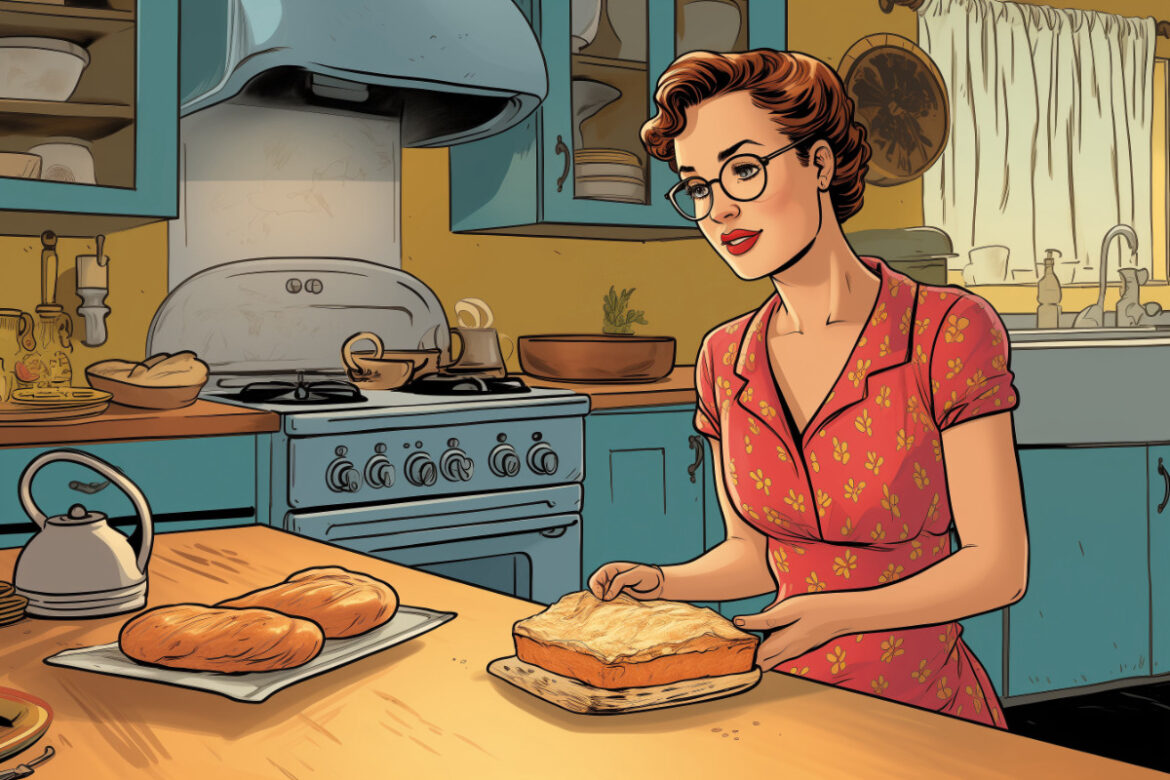Von Gizem Güler
Baking bread, homeschooling children, and tending to the home with unwavering dedication—the #tradwife movement has taken social media by storm. At its core, the movement claims to celebrate traditional gender roles; women embrace being full-time homemakers while their husbands serve as breadwinners. While some see it as a personal choice, a lifestyle steeped in nostalgia, others caution against its implications, especially for women from socioeconomically disadvantaged backgrounds.
On the surface, the #tradwife lifestyle can appear empowering. It allows women to reclaim and redefine traditional roles on their own terms, emphasizing family values, domesticity, and the joys of a simpler life. For some women, stepping away from paid employment offers freedom from the relentlessness of hustle culture and a chance to focus on what they deem personally fulfilling. However, for others, it may have harmful consequences.
the #tradwife lifestyle could entrench traditional gender norms, leaving little room for progress.
Here lies the problem: Not all women have the luxury of choice. Being a #tradwife can be a choice for women who have economic independence, such as wealthy influencers. However, for those coming from a low-income background, being a #tradwife can be the only option. Poorer women, especially those with limited access to education and economic independence, may find themselves trapped within these traditional structures, unable to leave unhappy or abusive marriages. Promoting the #tradwife trend may romanticize a lifestyle that many women cannot freely choose or escape from. Therefore, while some influencers greatly profit from the trend, its promotion can harmfully stereotype low-income groups.
Susan Glaspell’s Trifles serves as a chilling reflection of what happens when women are confined to roles that limit their autonomy. In the play, Mrs. Wright’s life is marked by isolation and an oppressive marriage. Her world, reduced to a bleak and stifling domestic existence, leaves her without any means to express herself or seek happiness beyond her husband. The men investigating the crime in Trifles fail to see the emotional toll of her circumstances, dismissing the “trifles” of her daily life. Yet it is precisely in those “trifles” that her suffering—and her rebellion—become evident.
The #tradwife trend echoes similar themes, idealizing a past where women were tied to their homes and dependent on their husbands. While today’s Tradwives argue that their lifestyle is empowering because it is voluntary, the widespread promotion of this ideal may reinforce traditional gender norms in ways that disadvantage those who cannot freely opt out. For women in lower socio-economic classes, this narrative can create pressure to conform to roles that offer little room for empowerment or independence—echoing the realities from 1916 described in the play.
The economic implications are profound. A woman without financial independence may remain in a marriage not out of love or partnership, but out of necessity. By encouraging women to prioritize homemaking and childcare at the expense of careers or education, the #tradwife trend risks perpetuating cycles of dependency. In families where women’s empowerment is already constrained by poverty, the promotion of this lifestyle could entrench traditional gender norms, leaving little room for progress.

What Trifles teaches us is that the confinement of women, whether physical, emotional, or economic, has far-reaching consequences. While the #tradwife movement may work for a privileged few, it risks pushing a dangerous narrative for women who lack the resources to make other choices. For them, the #tradwife ideal is not an option—it’s a trap.
It might be tempting to indulge in the nostalgia of the #tradwife, but as Trifles so poignantly reminds us, the cost of confining women to traditional roles can be devastating. True empowerment lies in expanding choices, not limiting them. For women in poverty, that means promoting education, career opportunities, and equality—not a return to the “good old days” that weren’t good for everyone. After all, the struggles depicted in Trifles are not relics of the past—they are warnings for the future. Let’s not allow these “trifles” to slip by unnoticed.
Title Image (c) Freepik.com
Photo (c) Sarah Naumann (Instagram: @catching.candids)


Schreibe einen Kommentar